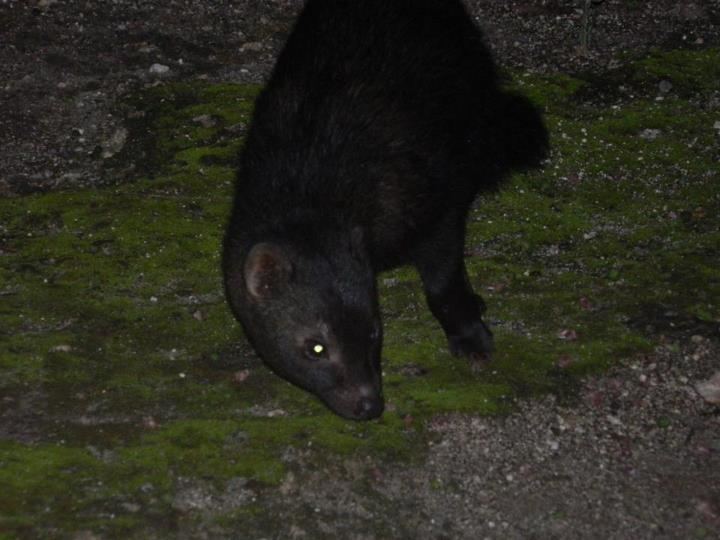Subfamily Herpestinae Rank Species | Phylum Chordata Family Herpestidae Genus Bdeogale Higher classification Bdeogale | |
 | ||
Similar Bdeogale, Black‑footed mongoose, Long‑nosed mongoose, Jackson's mongoose, Alexander's kusimanse | ||
Description
The bushy-tailed mongoose (Bdeogale crassicauda) is a mammal in the family Herpestidae found in central Africa, from southern Kenya to central Mozambique. It has dense brown/black fur, short wooly ears, and a plush muzzle. It is often under reported because of its small size, strict nocturnal activity, and elusiveness. This species is not sexually dimorphic in color but there are slight differences in size. Martinoli et al. Tail is wide and bushy, They and their other closely related cousin, the Black- footed mongoose, have large posterior cusps on their p3 tooth. These expanded molars indicate that it is primarily an insectivore, although other carnivorous habits have been documented.
Contents
To reveal more information on the size of these animals, Martinoli et al. caught 5 individuals that were then marked and recaptured in Arusha NP. After taking measurements, averages revealed:
Head- Body length (mm): 407 M/ 383 F; Tail-length (mm): 230 M&F; Foot length (mm): 77.7 M/ 74.9 F; and body mass (g): 1273 M/ 1300 F (M being males and F being females).
Overall it is usually 40–50 cm (16–20 in) long and weighs around 0.9–1.6 kg (2.0–3.5 lb).
Phylogeny
The ancestral state of the mongoose family had all of these attributes: a strong saggital crest, presence of superior premolar, absence of posterior cusp on P3, and short claws on the forefoot.
The Bushy tailed mongoose is closely related to the Black-footed mongoose (Bdeogale nigripes). Perez's study of genes within the Herpestidae family showed the Bdeogale genus is monophyletic. Close cousins of this clade include the Ichneumia and Cynictis families.
Evolution has selected for foot specialization within the Bdeogale family. Suppression of pollex and hallux bones and shortening of other digits have led this family to have only 4 toes on both the hindlimbs and forelimbs (symmetrical toes).
Subspecies
Preferred Habitat
Because of this animals size and stealthiness, the range in which they occur is not completely known. Although, it has been documented that they prefer locations that are easy for them to hide in that are also near rivers.
An experiment by Pettorelli et al. was carried out in northern Tanzania using camera traps to find out total species distribution. Bushy tailed mongooses were spotted in over 31 different trap locations. The study even showed the Bushy tailed mongoose persists in locations not previously known (Ngorongoro Conservation Area, Biharamulo-Burigi-Kimisi Game Reserve, and Mahale Mountains National Park). In the locations recorded, the camera trap data shows this species prefers Acacia woodlands and riparian zones. An interesting thing to note is they also showed avoidance to croplands and open areas.
Capture- mark- recapture experiments by Martinoli et al. showed that Bushy Tailed mongooses used open shrubland 14.3% of the time and multilayered forest 85.7% of time. These areas where the animals were caught have low environmental variance like temperature, humidity, etc. The researchers inferred that Bushy tailed mongooses have a low tolerance to environmental change. For this information to true, they suggested repeating the experiment in other places this species is known to be found.
Conservation Strategies
As said by Petteorelli et al. and Martinolli et al., this species has a strict range of tolerance and specific habitat preference. Although this species is listed by the IUCN as of least concern, habitat degradation and fragmentation could cause many problems for this species including land use dynamics (shifting its territory to grazing area for cattle) and prey depletion. The potential for illicit harvesting of its own species could become a concern as well. In Martinoli et al. they assumed that by decreasing areas of National Parks, it might force increased predation by larger predators (servals, caracals, and other canid predators).
